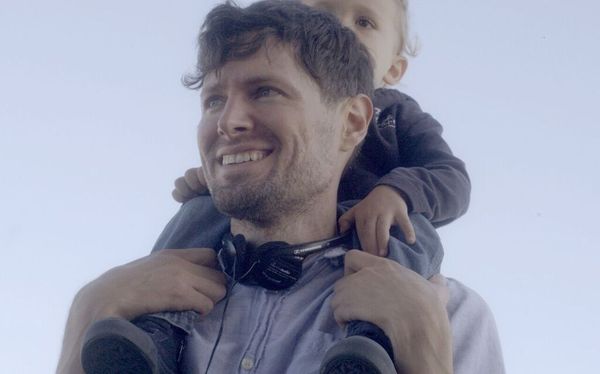 |
| Director Seth A Smith with small star Woodrow Graves |
The Crescent is a small Canadian horror film that’s making waves. It follows a mother and son who retreat to a beach house to recuperate after her husband, his father, is killed in an accident. Themes of circles and waves are explored through marbling and the sea and a plot that is tangled like the weed that washes up on the shore. It’s a complicated film for a relative newcomer to attempt, but director Seth A Smith, who has several short films under his belt, noted when we spoke about it that he had completed one other feature before.
The Crescent “wasn’t actually my first feature,” he said, “but it was our first feature that was, I don’t know, a professional film I guess. We had a feature called Lowlife which we basically did out of pocket for a couple of thousand dollars. With this one we were actually waiting to do a bigger film that cost a lot of money and I had this story idea in my back pocket and it starred a two year old and I just happened to have a two year old so, yeah, we decided to do it for a small amount.”
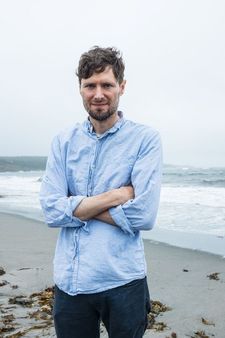 |
| Seth A Smith |
There’s that old warning about the folly of children and animals, I point out, and he did both in this film.
“There’s good reason, for sure, not to use kids! I learned as a new parent that there’s a reason two-year-olds aren’t in films unless it’s the back of their head or something, because they just don’t have any language skills so they can’t communicate a lot of the time, which is why I think I couldn’t have done it if it wasn’t my own son. You really have to know how they’re feeling and if they’re feeling like they want to participate. We basically just designed the whole production to work around his schedule and what he was into. If he was doing an activity we’d all just jump up and start filming. With the crew, we gave it a lot of distance, we kind of treated it like animal photography. We’d all kind of hide in the background and give my son Woodrow [Graves] and Danika [Vandersteen], the lead – she’d kind of set up the scene, and we gave them some space to do what they’d do naturally. We tried to capture it as real as possible.”
How much of the film was scripted beforehand and how much did it develop around what Woodrow chose to do?
“It’s surprisingly close to the script, actually. The script was written pretty quickly, in about two weeks. I co-wrote it with someone else [Darcy Spidle] but I wrote a lot of [Woodrow’s] lines in there. A lot of the lines are things that he was saying at the time so I knew that he would be into saying some of that stuff, and at that age they’re really into mimicking what you say.” He laughs. “So it was actually pretty easy to get him to read lines. It actually worked really well.
“All the magical parts and my favourite parts are the improvisations and those things that you don’t plan out. That’s what makes the film beautiful to me.”
Did Woodrow have much understanding of what was going on when people were filming him?
“Oh yes. We actually had done a short film called Wind Through A Tree before, so that was his introduction to cameras. We’re all filmmakers in our household so he’s very used to cameras. By the time of filming The Crescent he could film somebody. He was using the camera and I think he was just so used to it that that was the reason he wasn’t constantly looking at the lens. He was just used to having cameras around. When we’d shoot something I’d play it back for him and he’d laugh. He’s definitely got the concept.”
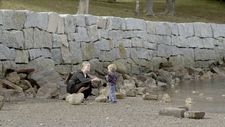 |
| Danika Vandersteen and Woodrow Graves |
So will he be making his own films someday?
“He already is!” Seth laughs, with a hint of pride. “Back then, though, there was a lot of magic tricks in there too, like things that we kept away from him. Obviously it’s a horror film so he hasn’t watched the film. At this age it would be just a little weird for him to, because he’d probably see it as a home video and maybe think that that really happened or something.
“Any scenes that had him running away from a monster or something, they were all done separately so he was never in the same room with someone scary like that. So a lot of it was just kind of fabricated and edited together afterwards.”
I note that early scenes of Woodrow facing the kind of day to day peril that toddlers do – balancing on the edge of a flowerbed, playing with tape that he might eat – really made me nervous, long before any more conventional horror elements were introduced. Was that something Seth used deliberately to build up tension?
“Yeah, well, that’s the thing,” he says. “For me it’s very unsettling. When you are a new parent, a first time parent, there’s all of these new anxieties and things that you weren’t aware of before - all these new dangers. That was kind of the premise of the film for me. It can be a bit horrifying at first.
“People see the film very differently. What we found is that parents really react to the scenes with the child a lot stronger, and maybe people without kids react to the other elements of the film. There are some people that just don’t get the film and sometimes they’re those people that see children as like dogs or rocks and couldn’t care less about what they’re doing, so they’re not interested in the parts where it’s just the child wandering about in a house by himself. For other people that’s one of the more terrifying moments, you know?”
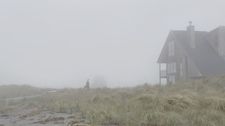 |
| The beach house |
I agree – but I also found those scenes interesting because of the way they reveal the child as an individual, something that later becomes important to the plot.
Seth concurs. “With two-year-olds, you’re always studying these new friends that you have, and it’s interesting. You may think that they’re going to be a complete copy of yourself but they have their own personalities and it’s fun to discover that.”
Another big challenge when filming must have been the environment, I suggest. How did they keep their equipment safe for several days on a windy beach?
“We weren’t anticipating the bad weather,” says Seth. “It actually ended up being record breaking waves and wind at the time, for that area. A lot of it was set outside and we were trying to figure out whether we should wait, and we were kind of getting crunched for time, but I’m glad we actually went through it because it looked good on film and added to the emotional tension of certain scenes... it looks great. It’s hard, though!
“It was a bit risky. We’d be taking a camera into the ocean, hoping the waves wouldn’t push us down, but it wasn’t too bad. We’re all maritimers that have grown up on the ocean so we’re pretty used to it.”
The scenes which involve marbling also looked challenging. How hard was it to get them to work?
“Marbling’s a very difficult art form, for sure... It was difficult. Originally I planned to do a lot of it myself, and I really wanted to marble a person – that was one of my early goals with the film. But when I looked into it, there were these folk in Detroit that were called BL Visuals and they had been going to music festivals all around the world marbling people for the past year. I approached them and they were really into the idea of the movie so, yeah, luckily we had some real pros doing that stuff.
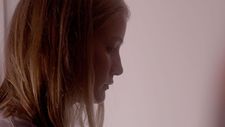 |
| Danika Vandersteen |
“Marbling’s a very old art form but it’s just recently – because of the advent of non-toxic chemicals in paints – people are able to be marbled on their skin, so the guy who was marbled in this was the first male nude to be marbled it Canada. That was kind of cool.”
It fits well with a film that’s full of circular and crescent-shaped images.
“Really simple geometry has always been a compositional tool for me. I’m kind of just fascinated by circles and squares and triangles. I must have played with blocks too much when I was a kid but it’s always in there.”
So what, for hilm, is the film’s central message?
“For me there’s the classic parental moral that if you love a kid you have to let it go. Every mother, every father has to let go of their child at some point. In this case that may be a little, or a lot, early!” He laughs. “That was a feeling that was going into every scene. I spend every day with my son just hanging out and discovering these interesting ideas that he comes up with, and I wanted to bring that to the film.
“You know, a lot of children in movies, when you’re watching them, they’re hugging their parent or they’re just running around getting in trouble but you never really study them. I wanted to study a two-year-old and the magic of a two-year-old – in the context of a weird fantasy horror film.”
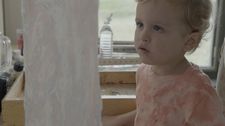 |
| Woodrow Graves looking at the marbling |
Does he see the two of them working together again in the future?
“I’m sure we will at some point. He’s less into being directed these days and more into directing. So maybe I’ll be in his film. I don’t know.”
And what’s next for Seth as a filmmaker?
“We have a very ambitious sci-fi film that we’re going to shoot this winter. I can’t say too much about it yet because there’s a lot of details still up in the air, but yeah, we’re very excited.”
The Crescent is in cinemas in Canada now.





















